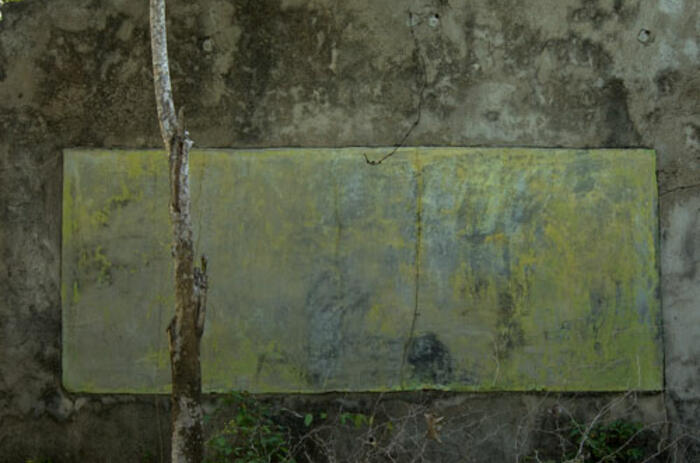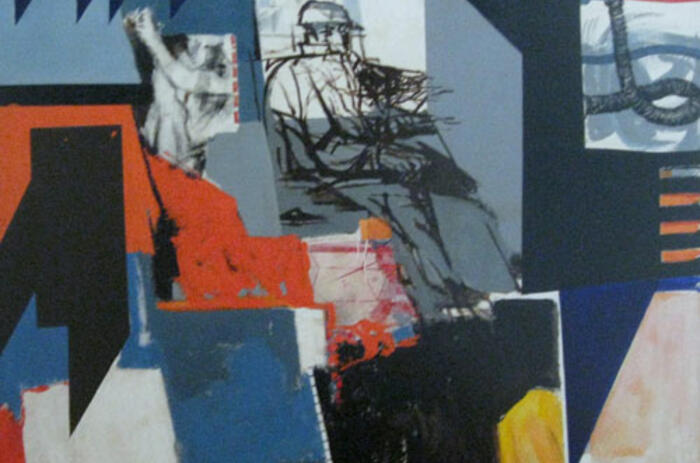Reviews

Jac Leirner
Seen from far away, one of the pieces at Jac Leirner's retrospective show now on at Estação Pinacoteca in São Paulo looks like an all white minimalist composition, a Robert Ryman of sorts, discrete and almost about to disappear against the immaculate wall of the museum.

Ana Mercedes Hoyos
For several decades now, Ana Mercedes Hoyos has focused her attention on the cultural influence that a social minority, in particular the one of San Basilio de Palenque, can exert on our national identity as Colombians.

Beatríz González. Comedy and tragedy. Retrospective 1948-2010.
Governed by four thematic axes, the retrospective Comedy and tragedy 1948-2010 by Beatríz González, was presented at the Ciudad del Río venue of the Museum of Modern Art of Medellín.

Chema Madoz
The first impression when viewing Chema Madoz’s (Spain, 1958) images is one of surprise and perplexity. Then we will identify this impression with the surrealist touch in her work. At a later stage, we will dwell on the warmth of the grain and the compositional purity of the nuances ranging from white to black.

Oscar d’Empaire
The term assemblage is derived from the French assemblage, which means to gather together, unite. So making an art of assemblage is a sort of act of love, inasmuch as objects of different natures are fused. And just like in any human corporal relationship, things will make sense if the mixtures work. Thus the artist of assemblage arises as a magnificent alchemist that processes wastes to turn them into art.

Panorama of Young Venezuelan Artists
The institutional spaces to divulge the work of young artists are becoming progressively scarcer in Venezuela. For this reason we welcome the initiatives where new proposals can be shown. Sala CAF is sponsored by the Latin American Development Bank.

Luis Tomasello
In the book-object Negro el 10, the last collaboration between Julio Cortázar* and Luis Tomasello, the writer accurately describes the artist’s creative procedure. He states that “…

Karina Peisajovich
Karina Peisajovich’s recent exhibition, entitled “The eyes, sometimes”, features in the manner of an exploration of the intimate process of creation, the three possible scenarios: the studio, the encounter with nature, and the experience itself as a space for reflection.

Aurora Molina
The critical attitude towards the establishment and towards the power to hurt of some photographs based on an equivocal notion of aging and beauty define, on the whole, the view conveyed by Aurora Molina’s work.

Radical Optimism, 2
Like the first exhibition bearing the same title, which we could visit in 2010 and with which this show shares a contradictorily paradoxical spirit, the present exhibit opens with a series of graffiti leading to the gallery entrance. As in the previous show, we are overcome by a feeling of being in the presence of something that is not consistent − the words optimism and radical do not seem to work very well together.

Cristina Lei Rodríguez
Decadence is, without a doubt, one of the most defining traits of contemporary society. This feeling of deterioration which, in the opinion of Fredric Jameson , is a premonition of Post-Modernism itself, invalidates our capacity to predict with any certainty in what direction we are moving.

Magdalena Fernández
The installation 2iPM009, 2009, by the Venezuelan artist Magdalena Fernández (1964) is currently being shown at the Frost Art Museum, Florida International University, after its tour of the 10th Cuenca Biennial, and it will later travel to the Museum of Latin American Art in California.

An Other Place
Although the works range from painting to video installation, and although the artists are from Peru, Mexico, Argentina, Brazil and Colombia, “An Other Place” reverberates a collective sense of displacement.

Jesús Soto
The exhibition “Soto. Paris and Beyond, 1950-1970” curated by Estrellita Brodsky, brings together twenty years of work by the Venezuelan master painter Jesús Soto (1923-2005).

Emilio Perez
Emilio Perez was born in New York and raised in Miami, Florida. In 1990, at the age of 18, he moved back to New York to attend the Pratt Institute and returned to Miami two years later to complete his Bachelor of Arts in Fine Art at the New World School of the Arts.

Barrio Workshop Artspace
Five Miami-based Cuban artists aligned with the Neo-Expressionist tradition – Yovani Bauta, Frank Chinea Inguanzo, Carlos A. Díaz Barrios, Vicente Dopico-Lerner, and Ramón Lago − gathered together in a gallery that is deliberately marginal and warmly human: Barrio Workshop Artspace.

Rodrigo Echeverri
Looking into the work of Rodrigo Echeverri implies a risk. The strength that his compositions radiate arouses mixed feelings.

Agustina Woodgate
At the temporary headquarters of Spinello Projects, a currently abandoned kindergarten building, Agustina Woodgate, (Buenos Aires, 1981) intervened in the space with an installation, If these walls could talk.

Jorge Méndez Blake
With Biblioteca Mallarmé, Jorge Méndez Blake (Guadalajara, Mexico, 1974) embarks once again on an exploration of the boundaries and conjunctions between literature, art and architecture, which are recurring elements in his production and the subject of a fruitful study.

Emilia Azcárate
Emilia Azcárate’s (Caracas, Venezuela, 1964) most recent work offers us a new vision of the passage from the bidimensionality of the canvas to the three-dimensional object, which goes beyond the studies of depth that may be performed on the plane and that affords the latter a new form of life.

Carolina Antoniadis
Carolina Antoniadis (Argentina, 1961) exhibits her paintings, photographs and objects that summarize part of her biography and reveal the marked interest in design noticeable throughout her work. Behind an apparent exuberance of colors and vibration, the artist’s pictorial oeuvre hides more than what it shows.

Norberto Gómez
“What impacted me most of those works was their brutal and immediate character, which revealed the scarce concern of the artist for tempering, through rhetoric resources, the proposed experience”, curator Ana María Battistozzi points out when referring to the work that Norberto Gómez (Buenos Aires, 1941) started to make in 1977.

Ananké Asseff
Fear, insecurity and anguish are the subjects that Ananké Asseff has been exploring for a decade. Her career began with a series of photographs “Mi presente perfecto” (My perfect present), a sarcastic title for images that account for the economic, political and social crisis that Argentina has gone through.

Paraguay rapé
Interested in the complex relationship between Paraguayans and Argentineans, still impregnated with the burdens of war and dictatorial complicities (Triple Alliance, 1964-1870; Cóndor Plan), frontier tensions and illegal immigrants, Victoria Verlichak brings together in Paraguay rapé (Camino paraguayo – Paraguayan Road) the Argentineans of Paraguayan origin Matilde Marín and Luna Paiva, and the Paraguayans Joaquín Sánchez and Ángel Yegros.

Meditation, Trance
A block of ice holds a chair and a flag in place. It melts over the course of 24 hours triggering an act of destruction that may be sudden or gradual depending on the temperature of the room.

Liliana Porter
Tiny human figures swept up in a storm of colour and waves evoke fragility in a piece Liliana Porter showed at her latest solo exhibition at Luciana Brito Gallery in São Paulo.

Marco Mojica
A series of paintings and drawings, supported by photography, compose Marco Mojica’s last exhibition. Mediatization of the image both at the source and in the product continues to be the conceptual variable which configures the formal language of his artistic proposal in itself.

Juan Manuel Echavarría
One of the crudest examples of forced displacement in Colombia as a consequence of territorial fights is the one that occurred in the region of Montes de María, between the coastal departments of Bolívar and Sucre, in the north of the country, a strategic corridor for the passage of illegal drugs.

José Antonio Dávila
In 1967, José Antonio Dávila (New York, 1935) visited several cities in the United States on an invitation from that country’s State Department. Back in Venezuela, he conceived a figurative approach to contemporary man conveyed through cabins and engine rooms where man is trapped in anguish and alienation.

Héctor Maldonado
The rising career of Héctor Maldonado (Puerto Rico, 1972) has achieved its first great institutional backing with the current exhibition at the Museo las Américas of a comprehensive compendium of his oeuvre under the suggestive title Welcome Home.

Distant Star
In Los detectives salvajes (The Savage Detectives), Roberto Bolaño described the way in which the real-visceralists, or viscerrealists, walk backward. How backward? Backwards, looking at a point in space but walking away from it, in a straight line towards the unknown.


